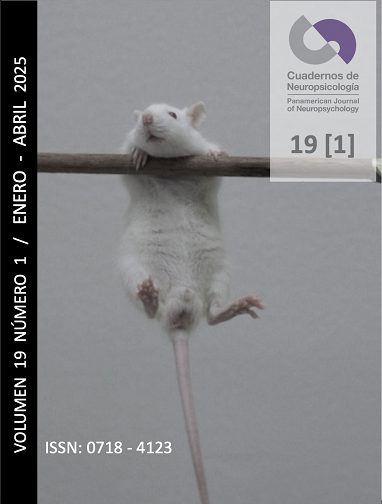Theories of dual Processing: A sociobibliometric analysis (2003-2022)
Abstract
The dual processing theory posits that human reasoning is the result of the interaction between two distinct types of processing: one rapid and intuitive, and the other slower and more reflective. This study employs a bibliometric approach to analyze the evolution of this theory between 2003 and 2022. The methodology employed in this study is as follows: A bibliometric study was conducted using the Web of Science and Scopus databases. The data set comprises publications related to dual processing theory, spanning the period from 2003 to 2022. The results of the study are presented below. The analysis revealed a notable increase in the number of publications on dual theory. The most influential authors and major institutions were identified, with a particular focus on developments from countries such as the United Kingdom, the United States, Canada, and France. The predominant areas of research were on the scope of the theory in the explanation of reasoning in various dimensions, as well as its intersection with emotional, cognitive, and psychopathological phenomena. The results suggest that dual processing theory has gained popularity and has been consolidated in the scientific literature.
Downloads
Published
How to Cite
Issue
Section
License
Copyright (c) 2025 Fernando Andrés Polanco, Horacio Daniel Garcia, Maximiliano Sapino, Daniel Pitoni

This work is licensed under a Creative Commons Attribution-NonCommercial-ShareAlike 4.0 International License.
Articles published in this journal are protected under the Creative Commons Attribution-NonCommercial-ShareAlike 4.0 International (CC BY-NC-SA 4.0) license. This means that authors retain full rights over their research and publications at all times. As a journal, we fully respect and promote the principles of open access established by this license, allowing the work to be shared, adapted, and distributed for non-commercial purposes, provided that appropriate credit is given to the authors and any derivative works are licensed under the same terms.
Authors are responsible for obtaining the required permission when they wish to reproduce part of the material (figures, etc.) from other publications.
Likewise, CNPs allows authors to host in their personal sites or other repositories that they deem convenient the Final and Definitive Version of the published article with the format assigned by the journal. In no case do we allow access to preprints of the article under evaluation or already published.
When submitting an article to CNPs you are aware that all the contents of CNPs are under a Creative Commons License. In which it is allowed to copy and share the contents freely, always making reference to the origin of the publication and its author.





